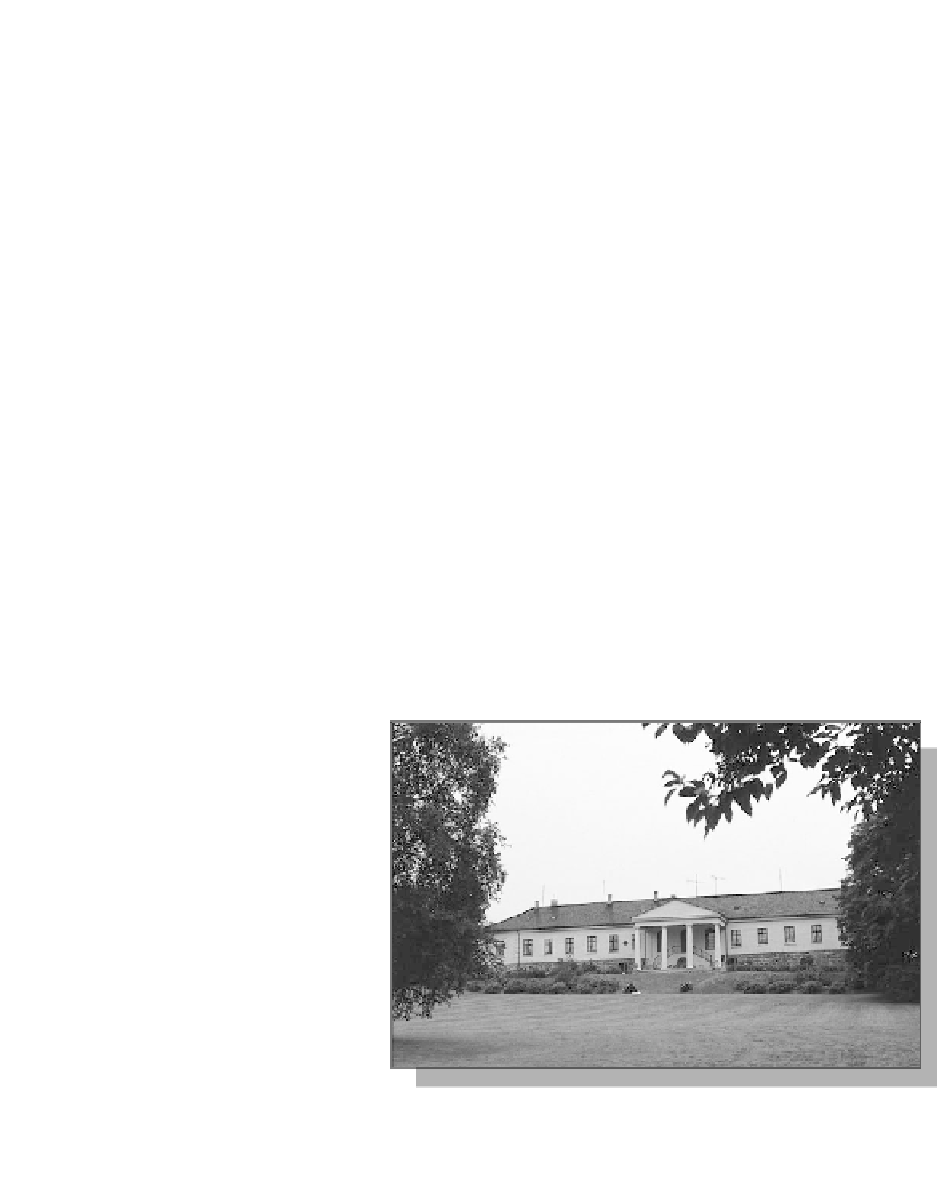Civil Engineering Reference
In-Depth Information
filled, and excess earth is then scraped off with a board. After a few hours the
blocks are ready to be removed from the mould, and after three days they are
stacked so the air can circulate around them. During this period the blocks must
be protected from rain, if they do not contain added cement. After two weeks the
blocks are dried well enough for building.
Laying earth blocks
The mortar used is usually the same earth that the blocks are made of, mixed
with water and even some lime. Portland cement should not be used, as it can
split the stones during shrinkage. Blocks are laid in normal coursing after dip-
ping in a waterglass solution to saturate them. Barbed wire, chicken wire or plant
fibres are recommended in every third course as reinforcement.
It is also possible to construct ceiling vaults from earth blocks. Exposed earth
roofs are not well suited to climates in which moisture and frost can quickly
break down the structure.
Surface treatments are the same as those used for the pisé technique.
Other earth building techniques
Adobe and pisé are the most widespread of earth-building techniques, but other
techniques also have interesting aspects. The most important alternative tech-
niques are wet-formed earth walls, earth loaves, extended earth tubes and the
'sandbag' technique.
Wet-formed walls
As with earth blocks, earth used for
wet-formed walls is relatively rich
in clay. The earth and cut straw is
mixed in a hole in the ground in the
proportion of 50 kg straw to 1 m
3
of
earth. The more clay the earth con-
tains, the more straw is needed. The
ready mixed earth and straw is then
thrown up with a pitchfork into the
shuttering of the wall and rammed
down by foot. Between adding each
course of about 50 cm the wall is
left to dry out for about two days.
When the wall has reached full
height, the vertical is checked and
excess earth removed with a trowel,
so that the wall has an even thick-
ness. A clay mix or gruel is poured
Figure 13.26: The manor house of Skinnarebøl in south east
Norway from the early 19th century is built in the wet-formed
wall technique.

